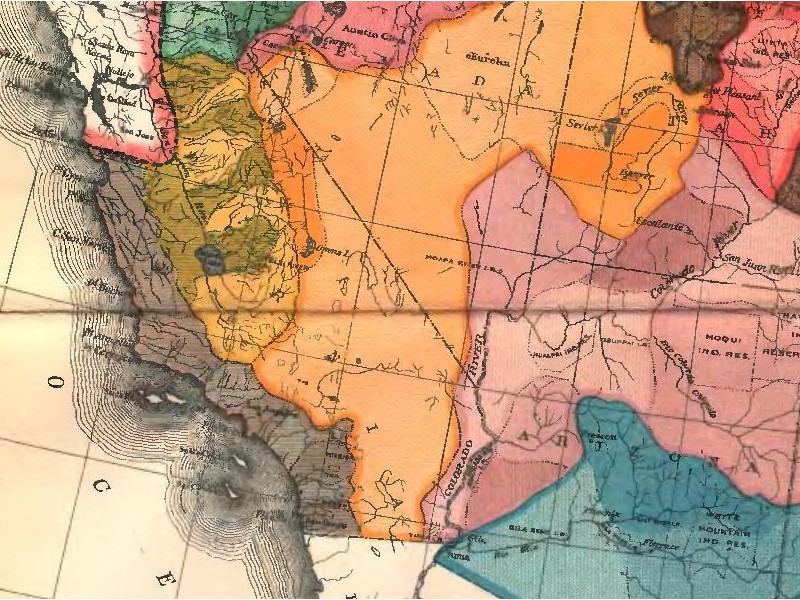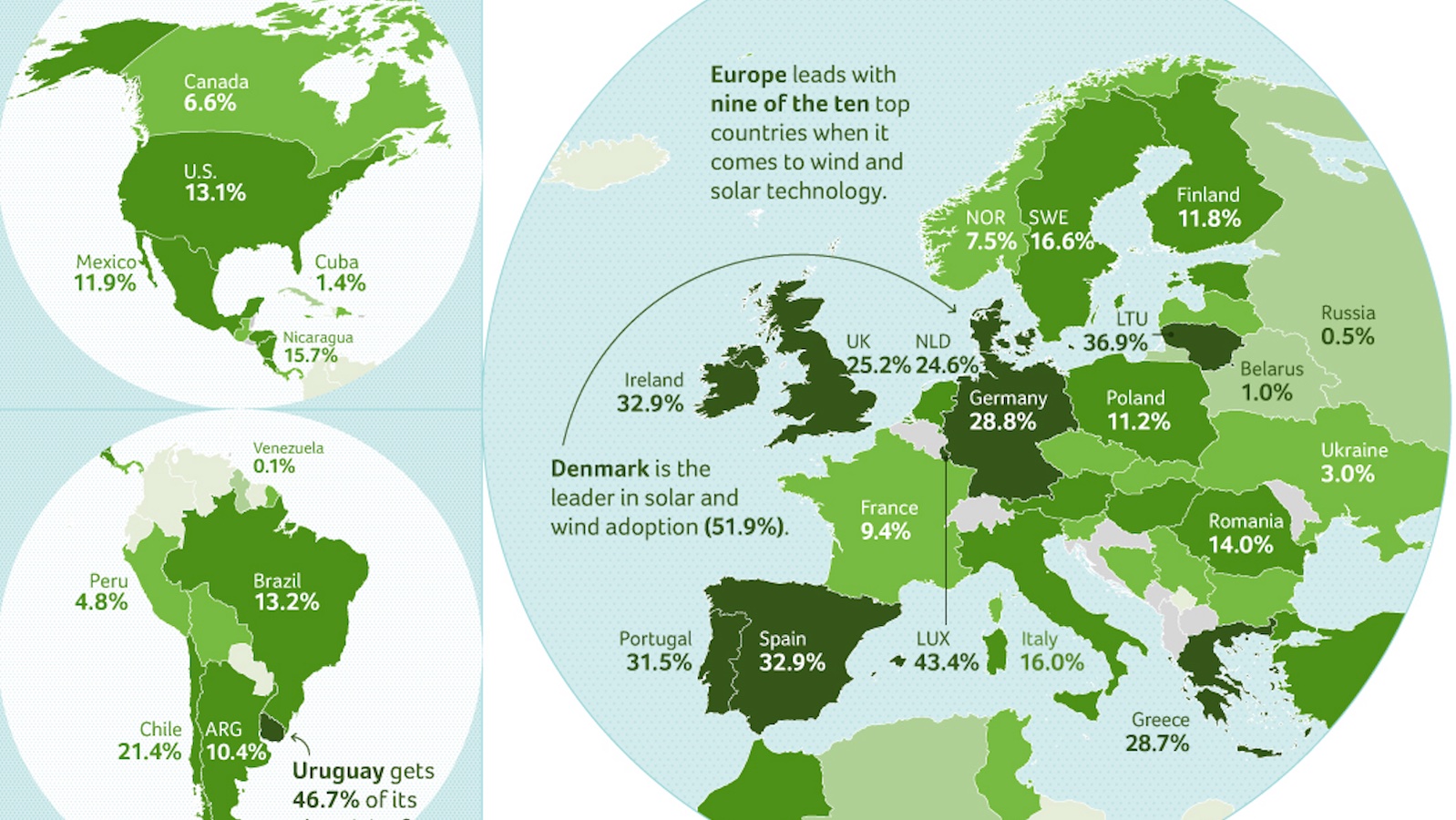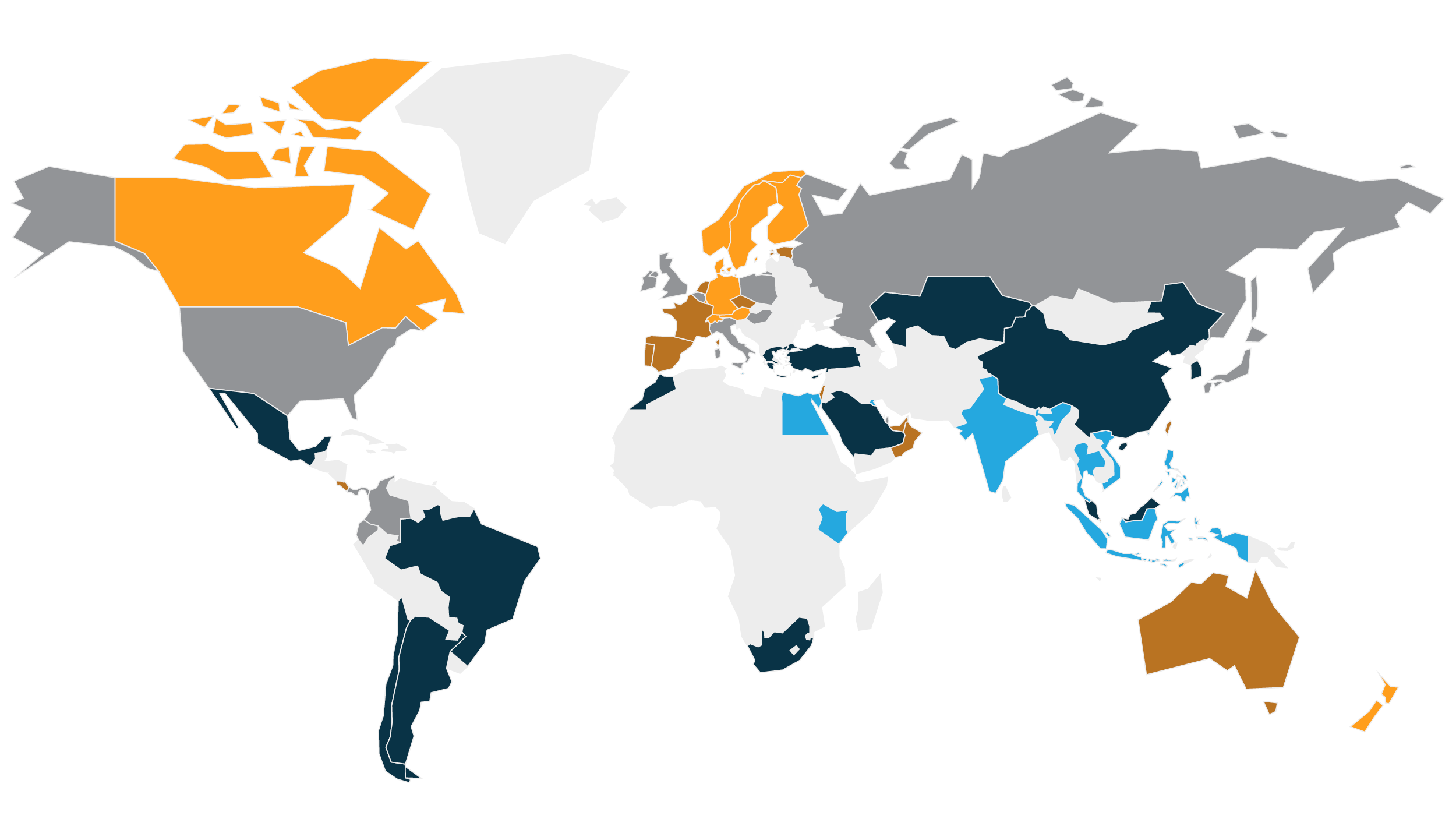Europe remapped: What the energy utopia “Eneropa” would look like in 2050

- The concept of “Eneropa” envisions a reimagined Europe in 2050, where traditional national boundaries are replaced by regions defined by their renewable energy capabilities.
- This futuristic map includes areas like the Tidal States and Isles of Wind, each optimized for specific sustainable energy sources, managed via a centralized grid to smooth out energy fluctuations.
- Despite its visionary nature, the practical implementation of such a radical restructuring faces significant political and logistical hurdles.
Imagine it’s 2050 and the old countries of Europe are gone. In their place are entities based not on history, language, or ethnicity, but on the type of renewable energy they’re best at producing. A centralized power grid redistributes these variously sourced types of energy throughout the continent to even out temporary gaps and seasonal imbalances.
Welcome to Eneropa, Europe’s hypothetical energy utopia, where the power supply is stable, sustainable, and locally sourced. There’s no need to depend on shady suppliers of dirty hydrocarbons, such as Russia or sellers in the Middle East.
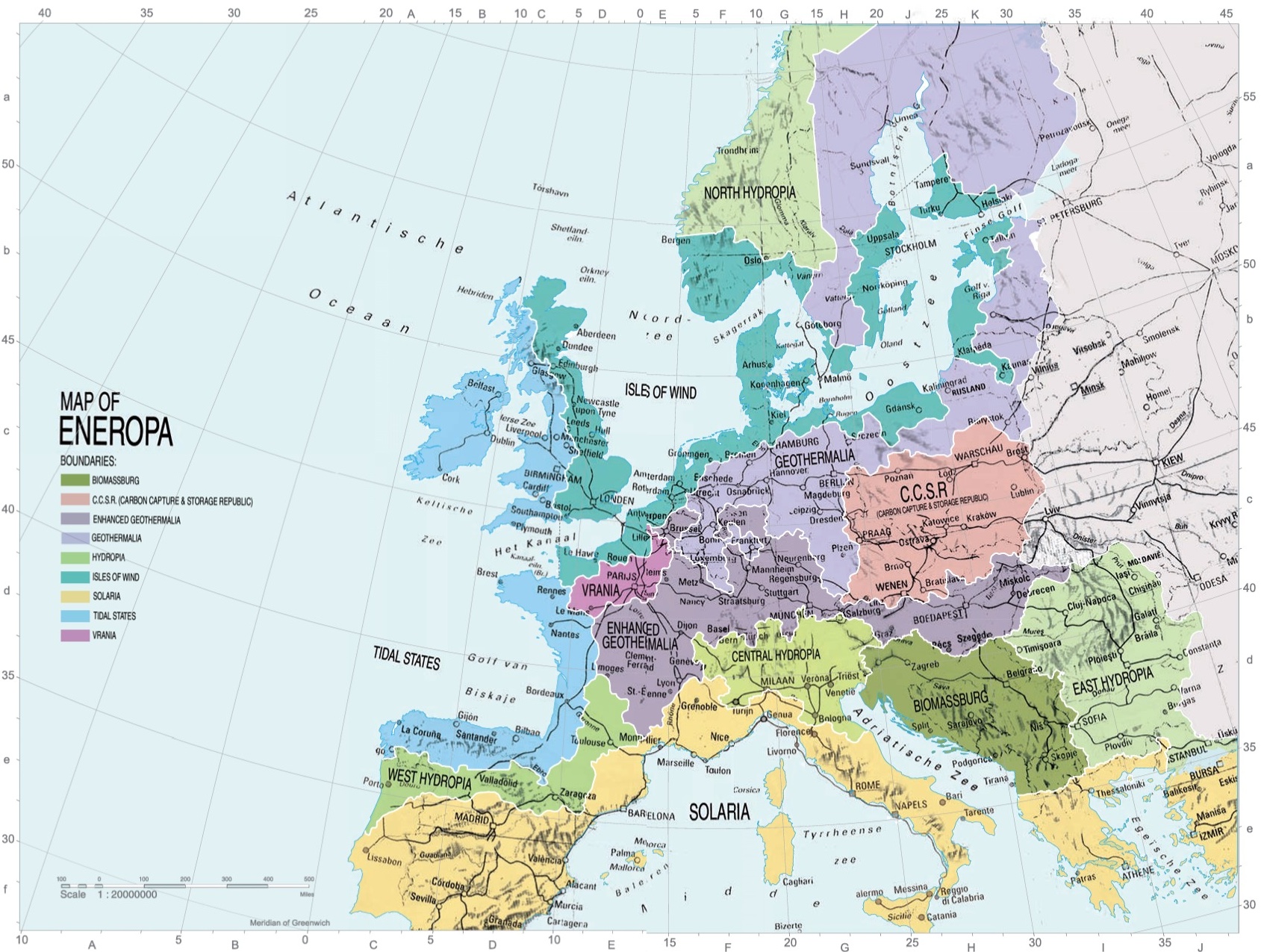
These are Eneropa’s constituent parts:
The Tidal States
- Where: Ireland, the west of Britain, and the Atlantic coasts of France and Spain.
- What: Using the kinetic energy of the ocean tides to power turbines, the Tidal States have perfected a low-cost, low-impact method to harvest energy from the sea.
The Isles of Wind
- Where: The east of Britain, France’s Channel coast, the coastal areas of Belgium, the Netherlands, Germany, Norway, Sweden, Finland, and the Baltic states, plus the whole of Denmark.
- What: These are the most blowy bits of the continent, so it makes sense to pepper these parts with wind turbines.
Hydropia
- Where: This utopia of hydropower is made up of four different states: North Hydropia (Norway and a chunk of Sweden), Central Hydropia (the Alpine regions of Switzerland, Germany, and Austria, plus northern Italy), West Hydropia (a strip of territory that runs from northern Portugal and Spain to south-central France), and East Hydropia (Romania, Moldova, Bulgaria, and European Turkey).
- What: Uniting these disparate regions is their potential to generate electricity using hydropower, in particular by damming the rivers that flow from their mountains to the sea.

Geothermalia
- Where: From France’s northern border across northern Germany and Poland to the Baltic interior, plus most of Finland and Sweden.
Enhanced Geothermalia
- Where: From central France to Hungary, taking in parts of Belgium, Germany, and Austria along the way.
- What: Iceland generates about 27% of its energy from geothermal sources 1 to 2 km (0.6 to 1.2 miles) deep, but not everyone lives on top of a volcanically active zone. Both Geothermalias in mainland Europe will have to dig holes 6 to 10 km (3.7 to 7.5 miles) deep to mine the Earth’s inner heat.
The Carbon Capture and Storage Republic (CCSR)
- Where: Southern Poland and Slovakia
- What: Its name being an obvious nod to the good old USSR and its heavy industries, the CCSR specializes in capturing and storing the carbon emissions released by the region’s still plentiful energy plants powered by oil, gas, and especially coal.

Biomassburg
- Where: Yugoslavia reunited, with Albania thrown in for added brotherhood and unity. (What could possibly go wrong?)
- What: This region specializes in converting biomass — crops, manure, food waste, and any organic matter, really — into energy by burning the stuff in power plants, or converting it into biofuels.
Vrania
- Where: North-central France. We suspect “Vrania” is just a cute way of misspelling “Urania.”
- What: You can argue whether nuclear energy is “sustainable,” but at least it doesn’t generate any greenhouse gas emissions. France’s energy policy is unapologetically pro-atomic: its nuclear plants produce 63% of its power.
Solaria
- Where: The southern parts of Portugal, Spain, France, and Italy, plus Greece.
- What: While wind energy makes more sense in northern Europe, solar is the obvious solution for the sunny south of the continent.
Eneropa is the whimsical illustration of a serious proposal. In 2010, the Office of Metropolitan Architecture (OMA) founded by Dutch architect Rem Koolhaas published Roadmap 2050: a practical guide to a prosperous, low-carbon Europe.

The study, commissioned by the European Climate Foundation, aimed to demonstrate how Europe could cut its carbon emissions by 80% by 2050, in line with the ambitions of the EU at the time. Europe could do this by radically reorienting its energy industry toward sustainable sources, such as wind and solar, the study argued.
While they may be sustainable energy sources, wind and solar are also quite erratic. Roadmap 2050 proposed to resolve that problem via a central grid that compensates for windless days in northern Europe by importing electricity from the sunny south of the continent — and, vice versa, with other sustainable energy sources thrown in for good measure.
Roadmap 2050 is more relevant than when it was first proposed 14 years ago. Following Russia’s invasion of Ukraine in 2022, Europe weaned itself off Russian supplies of oil and gas — a painful and costly process that is by no means complete. In 2021, EU member states imported 40% of their pipeline gas from Russia. While that fell to just 8% in 2023, even that reduced amount still provides Moscow with some geopolitical leverage over Europe.
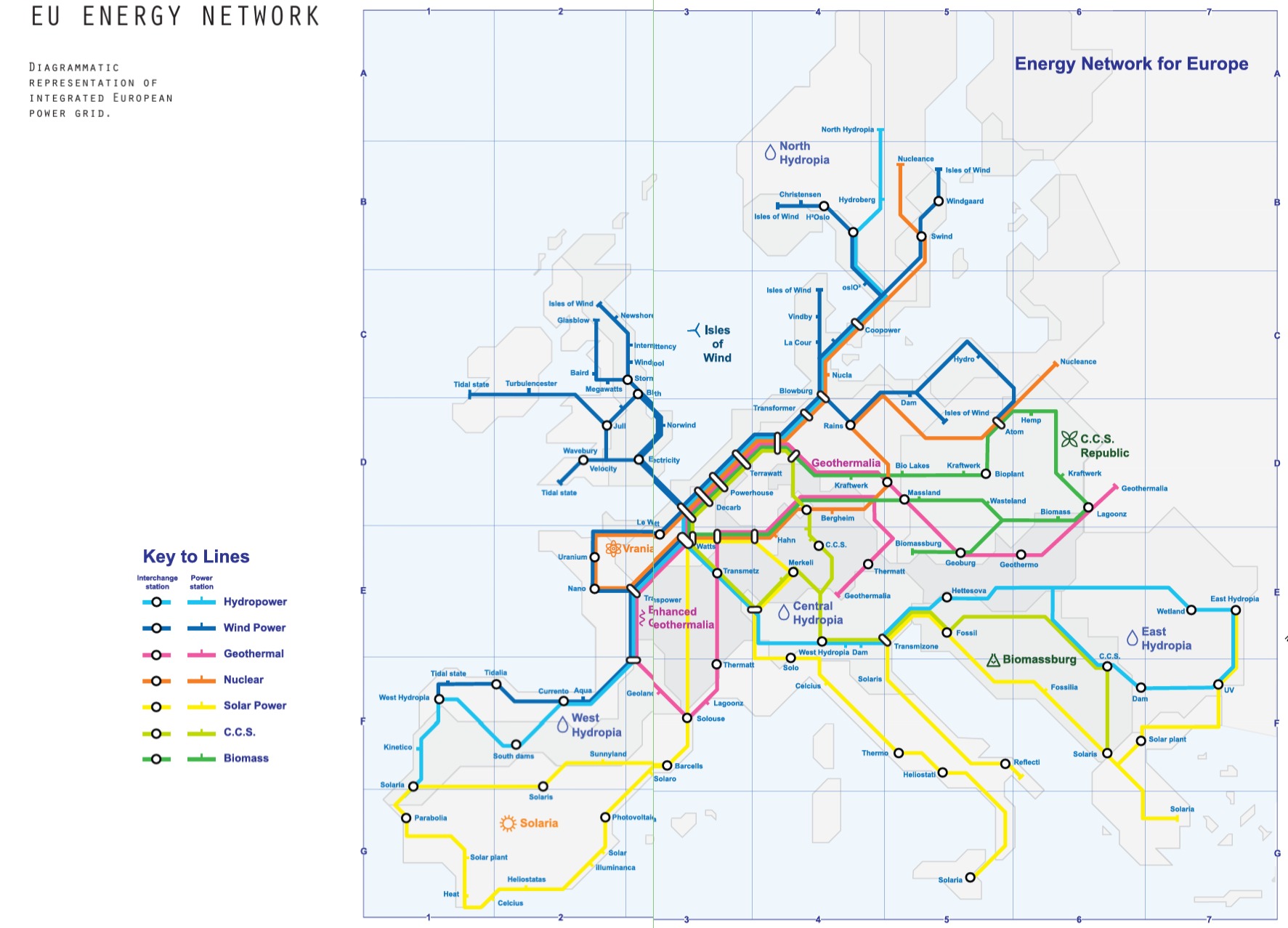
The silver lining of Europe’s rapid and unexpected (if still incomplete) detox from Russian oil and gas: Europe is now forced to speed up its energy transition. And to be fair, it had already made considerable progress. In 2004, the share of energy from renewable sources in EU energy consumption was just 8.5%. By 2022, that share had almost tripled, to 23%. And last year, the EU raised its 2030 target for energy consumption from renewable sources from 32% to at least 42.5%, aiming for 45%.
Previously, the EU had already upped the ante in terms of CO2: While in 2009 the goal was to reduce carbon emissions by 80% by 2050, the 27-member club now aims to be entirely climate-neutral by the middle of the century.
And yet, despite both the strong urgency and high ambition of Europe’s energy transition, we’re no closer to an energy-based reapportioning of the continent than when Roadmap 2050 was offered to the EU for evaluation more than a decade ago. There’s also not much chance that the Tidal States, North Hydropia, or any of the other proposed energy regions will emerge by mid-century.
For it seems a curious constant of rationally based redistricting proposals that they are immediately dismissed as entirely unrealistic. (See also John Wesley Powell’s prescient yet unheeded suggestion, in 1890, to organize the arid west of the United States into nearly two dozen Drainage Districts, to better manage the region’s scarce water resources.)
Fortunately, the roadmap contains other fantastical proposals that are less about politics and more about engineering, meaning they have a greater chance of success.
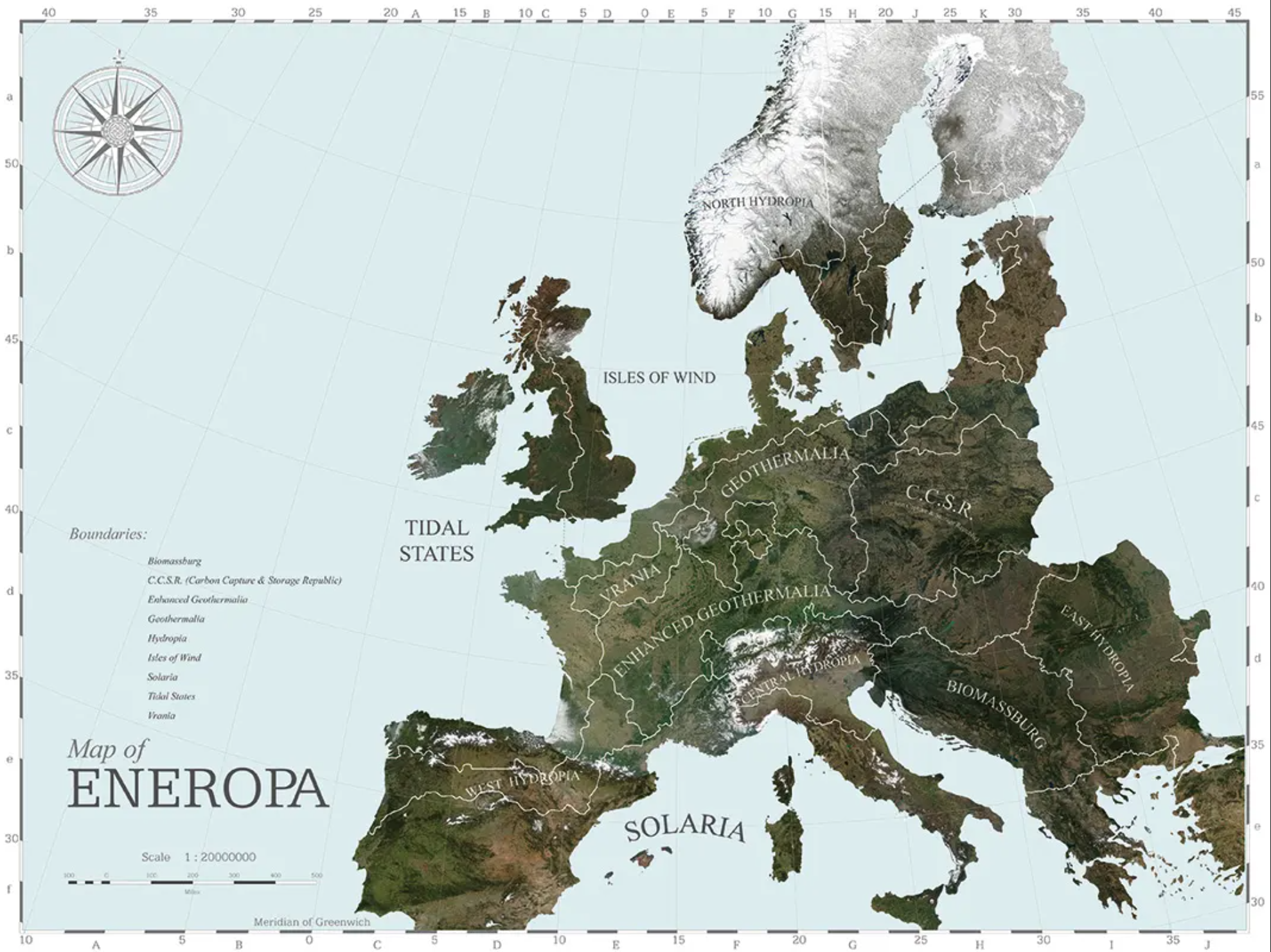
Perhaps by 2050, we’ll have high-altitude wind turbines, floating in the jet stream to harvest power from the constant, 160-km/h (100 mph) winds at altitudes 4.5 to 9 km (15,000 to 30,000 ft), sending down power via the cable that tethers them to a fixed place.
And perhaps we’ll have space-based solar panels, which can capture sunlight unimpeded by night, weather, seasons, or the filtering effect of the atmosphere. The panels could then convert the energy they capture into microwave energy to transmit it down to the Earth’s surface, where it would be reconverted into electrical energy.
Either would be an amazing technological achievement, and still more realistic than political classes giving up their national power bases for the greater good.
Strange Maps #1243
Got a strange map? Let me know at [email protected].
